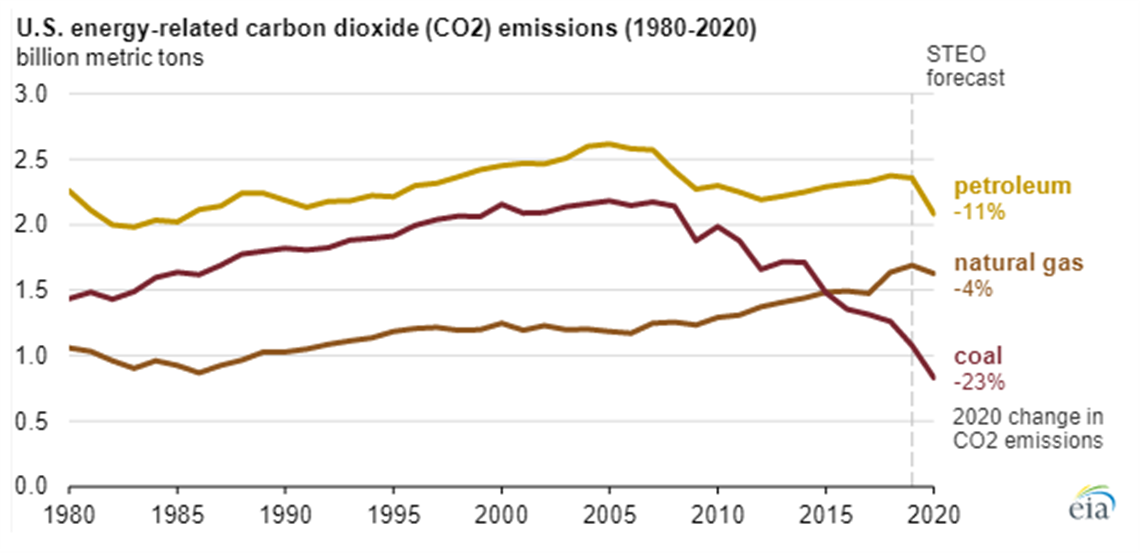EIA: Energy-related Carbon Emissions Plummeting
13 May 2020

The U.S. Energy Information Administration (EIA) estimates that U.S. energy-related carbon dioxide (CO2) emissions will decline by 11% in 2020, representing the largest decline in not only percentage but also absolute terms since the EIA began keeping track in 1949.
Much of the drop in CO2 emissions in EIA’s updated forecast arises from estimates of the travel restrictions and general economic slowdown associated with the efforts to mitigate the spread of Covid-19. However, even before the effects of COVID-19 became apparent in mid-March, EIA had expected a decline in 2020 energy-related emissions, generally consistent with the trend of lower U.S. CO2 emissions since their peak in 2007.
In mid-March, demand in the United States for petroleum products began to decline and, by mid-April, reached their lowest levels in decades. Stay-at-home orders, travel restrictions, and work-from-home arrangements reduced demand for motor gasoline, diesel and jet fuel. Petroleum is the largest single source of energy-related CO2 emissions in the United States, accounting for 46% of the 2019 total. In EIA’s latest short-term forecast, petroleum product consumption declines by 11% in 2020, and petroleum-related CO2 emissions decline by 12%.
Natural gas accounts for the second-largest share of energy-related U.S. CO2 emissions, at 33% of the 2019 total. Compared with petroleum and coal, EIA expects a relatively smaller decline in natural gas consumption and its related CO2 emissions (both 4% lower) in 2020. The electric power sector is the largest consumer of natural gas, and although EIA forecasts power sector electricity generation to decline by 5%, EIA expects natural gas consumed by the power sector to only decline by 1% because of relatively low natural gas prices. The closing or reduced operation of many nonessential businesses, combined with generally warmer weather in 2020, leads to a decline in commercial sector natural gas consumption.
U.S. energy-related emissions from coal have fallen in each of the past six years, and it accounted for 21% of the 2019 total. EIA’s latest forecast expects coal CO2 emissions to fall 23% in 2020 to 832 million metric tons, or less than half of its peak level in 2007. The electric power sector accounted for more than 90% of the coal consumed in the United States in 2019, and EIA expects coal to continue to lose market share to natural gas and renewables in the power sector in 2020.
STAY CONNECTED




Receive the information you need when you need it through our world-leading magazines, newsletters and daily briefings.
POWER SOURCING GUIDE
The trusted reference and buyer’s guide for 83 years
The original “desktop search engine,” guiding nearly 10,000 users in more than 90 countries it is the primary reference for specifications and details on all the components that go into engine systems.
Visit Now
CONNECT WITH THE TEAM









